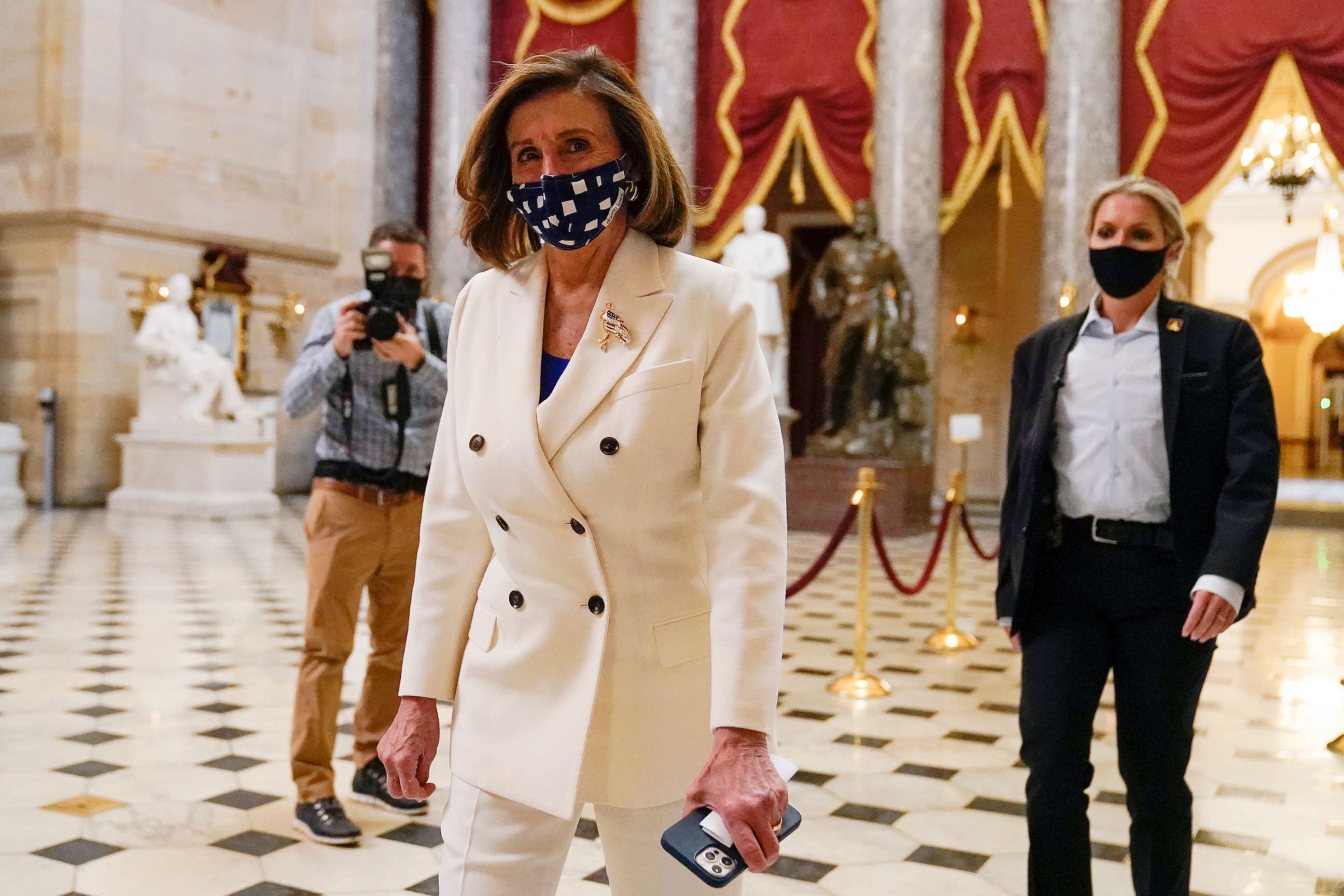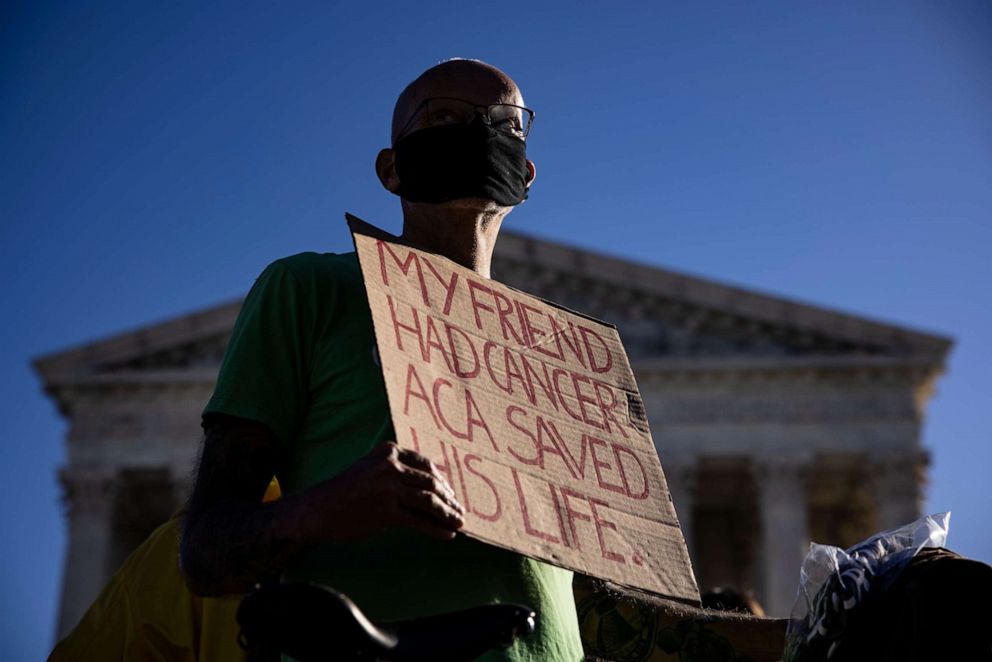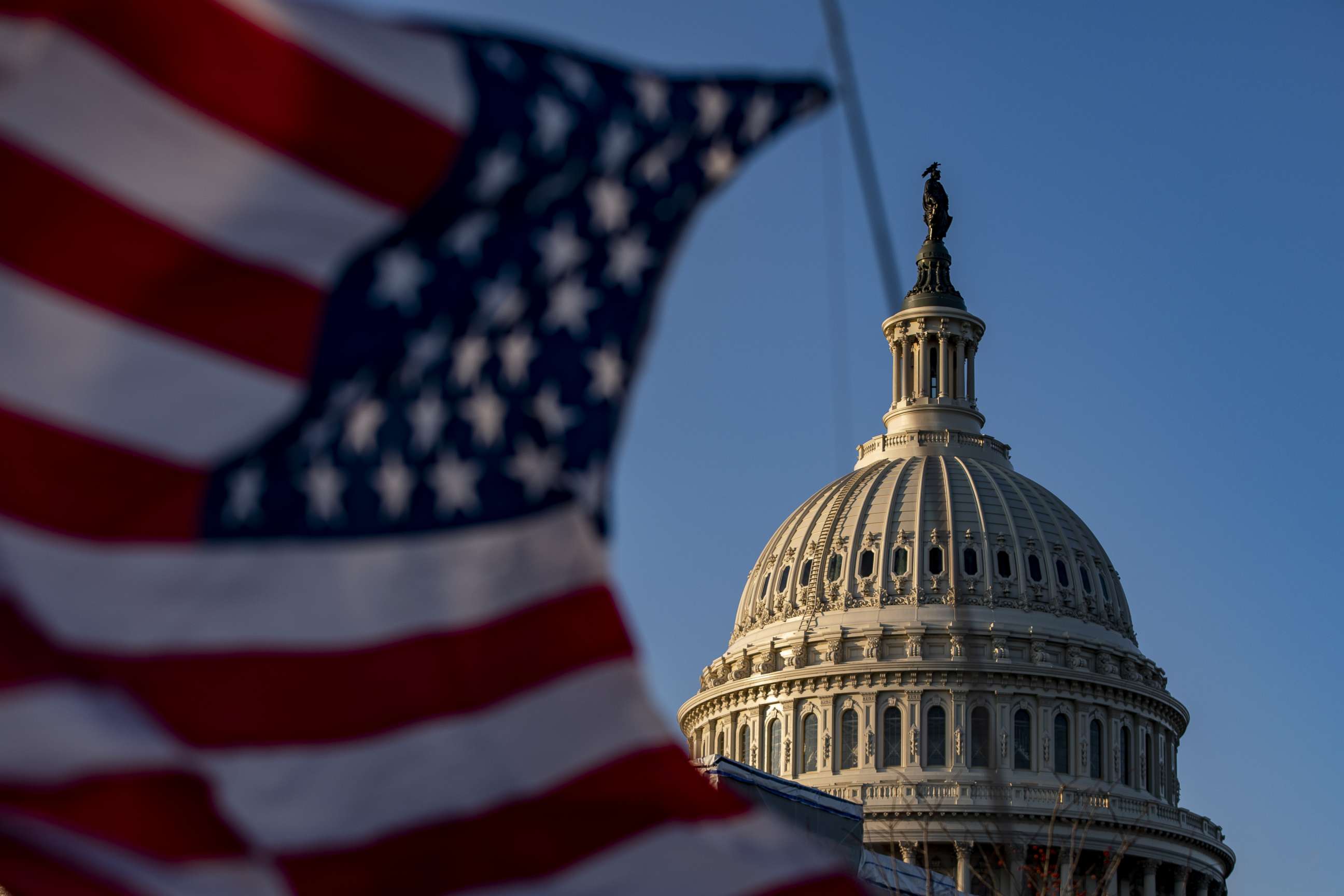Lower Obamacare premiums and other things you may have missed in the COVID-19 relief bill
The bill also impacts small businesses, housing and food aid, and more.
President Joe Biden is expected to sign the $1.9 trillion American Rescue Plan into law by the end of the week after the House voted to approve the legislation on Wednesday.
The expansive proposal, the largest taken up by Congress since the CARES Act last March, will provide direct relief payments and federal unemployment aid to Americans, give schools more funds to help with reopening and help speed up coronavirus testing and vaccination efforts.

But the legislation also includes resources for small businesses, housing and food aid, changes to the tax code and the most aggressive expansion of the Affordable Care Act since the health care law’s passage.
Republicans opposing the proposal argue that much of the package doesn’t directly respond to the coronavirus pandemic and includes unrelated Democratic policy provisions -- while Democrats and the Biden White House say the full package will help Americans and the economy rebound more quickly from the pandemic.
Here are some of the details you might have missed:
A major Obamacare boost
The legislation will increase subsidies for health care plans purchased on federal marketplaces for middle-class and low-income Americans.
The changes, which will expire in two years under the proposal, would provide “significant relief” to middle-income Americans making more than 400% of the federal poverty level, or more than $51,000 a year, according to Larry Levitt, the vice president for health policy at the Kaiser Family Foundation.
Americans making between $12,880 and $19,320 -- or 100% to 150% of the federal poverty level -- will not have to pay any premium for some plans, he told ABC News.
“This is the first significant enhancement of the Affordable Care Act since it was passed,” Levitt said. “These provisions go a long way towards putting plans within reach of people who have struggled to pay the premiums."
The premium adjustments could potentially benefit “tens of millions” of Americans, he added.

Under the new legislation, a 64-year-old making $58,000 a year would see their monthly premium payments drop from $1,075 to $412.50, when factoring in the new tax credit, according to the Congressional Budget Office. A 45-year-old making the same amount would see monthly payments drop from about $517 to $412.50.
The package will also subsidize premiums for recently laid-off Americans who want to remain on their health insurance plans provided by their former employers and encourage the 12 states that have not expanded Medicaid to do so by beefing up matching funds from the federal government for the next two years.
“This is going to bolster the safety net at a time when a lot of people are struggling,” Levitt said. “It’s a significant down payment on President Biden’s campaign health care agenda.”
It also sets up a potential political clash over the benefits -- which Democrats want to make permanent -- two years ahead of the congressional midterm elections.
State and local government help
The American Rescue Plan includes $350 billion in aid for state and local governments -- relief that Democrats and Republicans fought over for more than a year in previous relief package negotiations.
With tax revenue plummeting and many cities and states grappling with budget shortfalls, the new tranche of funds can be used in a variety of ways -- from boosting public health efforts and shoring up infrastructure, to supporting residents, businesses and industries battered by fallout from the pandemic with grants or direct aid.
Local governments are also expected to use the funds to restore services disrupted by lost revenue from the coronavirus pandemic.
“The use of funds that is allowed by this bill is remarkably broad,” Mark Ritacco, director of government affairs at the National Association of Counties, told ABC News.
Republicans have criticized the fund as a “bailout” for Democratic states, though 28 states saw declines in overall tax revenue from April to December of 2020 compared with the same time period in 2019, according to the Tax Policy Center, a joint venture of the Urban Institute and Brookings Institution.
Democrats have argued that the funding is an important component of any relief effort to prevent state and local governments from cutting services and hiring, which could impact the trajectory of the economic recovery.
And the White House has promoted supportive statements from local Republican officials who have endorsed the recovery plan, even as many GOP lawmakers in Washington and governors have denounced the proposed spending.
Expanded child tax credit
Democrats’ plan includes a one-year change to the child tax credit to make it fully refundable for low-earning families -- a tweak that would essentially provide payments from the Internal Revenue Service to millions of Americans who don’t make enough to pay income taxes.
“The people who need the help the most can’t benefit from the credit as it’s structured today because there are limits to the refundable part of the tax credit,” Steve Wamhoff, the director of federal tax policy at the Institute on Taxation and Budget Policy, a nonpartisan think tank, told ABC News. “It’s a dramatic change.”

The change would increase the amount of the child tax credit to $3,600 per child under 6 and $3,000 per child between the ages of 6 and 18. That is up from a maximum benefit of $2,000 under the current policy. It also expands the ages of children eligible, which was previously capped at age 17.
The benefit will only last a year, though Democrats say they hope to extend the modification permanently.
Industry winners: Restaurants, concert venues, airlines
The massive legislation includes a specific pot of relief for independent restaurants -- the $28.6 billion Restaurant Revitalization Fund.
The program is designed to help smaller bars and restaurants that are not national chains, or groups with 20 or fewer restaurants that might have missed out on other relief programs for one of the hardest-hit industries in the economy.
The funds can be used for payroll, rent payments, utilities and other operational expenses -- fewer restrictions than the Paycheck Protection Program, which will receive another $7 billion and be available to more recipients, including previously ineligible nonprofits.
Music venues, comedy clubs, concert halls and performing arts spaces received $1.25 billion in grants and will also be eligible for relief through the PPP.
The industry began organizing last year at the start of the pandemic, calling for help for spaces that were among the first to close for public health reasons and are likely to be some of the last to fully reopen.
Venues will also be able to apply for grants through a Small Business Administration program created last year, though the agency hasn’t opened the fund for applications yet, according to the National Independent Venue Association.
The American Rescue Plan also sets $15 billion aside for more support to the battered American airline industry, extending the payroll support program to airlines and contractors to prevent tens of thousands of layoffs later this year.
‘Unprecedented' rental assistance
With 11 million families at risk of eviction, according to a March report from the Consumer Financial Protection Bureau, the package Congress will send to the White House will include nearly $50 billion to support renters, homeowners and homeless Americans.
That includes $27 billion in rental assistance -- on top of $25 billion in emergency funds passed last December -- $10 billion in mortgage aid and another $5 billion to help states and cities fight homelessness.

The rental aid dwarfs the $1 billion distributed by Congress after the foreclosure crisis a decade ago, according to Diane Yentel, the CEO of the National Low Income Housing Coalition.
“In recent memory there hasn’t been such an unprecedented and historic amount of funding to provide housing stability for low-income people,” Yentel told ABC News.
The COVID-19 pandemic began in the United States “in the midst of a severe affordable housing crisis,” she said, exacerbating the struggles many Americans have faced to avoid falling behind on their rent or mortgage.
The funding passed by Congress last December has yet to be distributed, in part because of the time it takes to set up the programs and submit applications, but also because of guidance and eligibility rules imposed by the Trump administration that the incoming Biden administration only recently revised, according to Yentel.
“They could have started their programs theoretically, but they wanted to wait to see if Treasury was going to rescind those problematic requirements,” she said.
Despite the White House’s calls for an eviction moratorium from Congress, that provision did not make it into the final bill and through the Senate’s stringent budgetary rules.
Housing advocates are encouraging the Biden administration to extend the Centers for Disease Control and Prevention’s moratorium, which is set to expire on March 31.
The Biden Justice Department has also appealed a Texas federal court’s narrow ruling against the CDC’s eviction ban.




